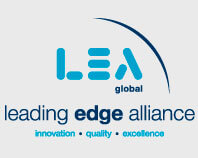The long-awaited $900 billion COVID Relief Package was passed by the House of Representatives and approved by the Senate late on December 21, 2020. The legislation, headed to President Trump’s desk for his signature, includes important updates to the Paycheck Protection Program (PPP). Key provisions contained in the Consolidated Appropriations Act, 2021 (the Act) include the following:
- Confirms full deductibility of PPP loan expenses;
- Allows PPP borrowers to also claim the Employee Retention Tax Credit;
- Gives borrowers new flexibility in choosing their Covered Period;
- Provides a simplified loan forgiveness process for loans up to $150,000;
- Permits certain 501(c)(6) organizations to obtain PPP loans; and
- Provides for $284 billion as part of a second round of PPP loans.
Tax Treatment of PPP Loans
For many borrowers, the most significant PPP provision included in the Act relates to the deductibility of expenses paid with forgiven PPP loans. When the IRS released Rev. Rul. 2020-27 and the related Notice 2020-23, the IRS’ position was that taxpayers could not deduct business expenses that are reimbursed by a forgiven PPP loan. In a letter written by Congress to Secretary Mnuchin on May 5, 2020, lawmakers wrote that the IRS’ position was contrary to Congressional intent.
Congress has come to taxpayers’ aide by overruling the IRS position and amending the CARES Act to add the following language:
“no deduction shall be denied or reduced, no tax attribute shall be reduced, and no basis increase shall be denied, by reason of the exclusion from gross income [by reason of PPP loan forgiveness]”.
This amendment confirms that PPP loan forgiveness is not a taxable event, and that business expenses paid with forgiven PPP loan proceeds are fully deductible for all borrowers, even those who have already applied for forgiveness. Similarly, the receipt of an Economic Injury Disaster Loan (EIDL) advance will no longer be taxable, and any expenses paid with the advance will remain deductible. Finally, the inclusion that “no basis increase shall be denied” clarifies for owners of pass-through entities that PPP forgiveness will increase basis.
Another significant law change is that employers who receive PPP loans may still qualify for the Employee Retention Tax Credit (ERTC) with respect to wages that are not paid for with forgiven PPP loan proceeds.
New Flexibility to Choose Covered Period
To be eligible for forgiveness, PPP proceeds must be paid or incurred during the “Covered Period”, which begins when the loan funds are disbursed. The rules formerly provided for only an eight or twenty-four week Covered Period, although the SBA did later clarify that a borrower could apply for loan forgiveness before the end of the Covered Period if the loan proceeds had been fully utilized.
The Act provides that, for the end date of the Covered Period, any borrower may now select any date that is between eight and twenty-four weeks after the loan disbursement date. This flexibility will allow borrowers to choose a Covered Period that ends prior to making a reduction in their workforce which could reduce the amount of their loan forgiveness.
Simplified Loan Forgiveness Process for Loans Up to $150,000
Borrowers with PPP loans not exceeding $150,000 will be able to apply for loan forgiveness by signing and submitting a one-page certification, to be established by the SBA not later than twenty-four days after the date of the Act’s enactment.
The borrower will be required to provide only the following information:
- The number of employees the borrower was able to maintain by receiving the PPP loan;
- The estimated amount of the loan spent on payroll costs; and
- The total loan amount.
The certification will attest that the borrower has:
- Accurately provided the required certification;
- Complied with PPP loan requirements; and
- Retains records that prove compliance with such requirements. Employment records shall be kept for four years following submission of the form, and other records shall be kept for three years.
Eligible borrowers may consider submitting the new one-page application but also completing the long application, keeping the answers provided in the long application in case they are audited. However, the Act provides that such borrowers will only be subject to audit for fraud, ineligibility, or material noncompliance with PPP requirements.
Additional Eligible Expenses
The Act expands the allowable use of PPP loans to include the following four new categories of expenses eligible for loan forgiveness:
- Covered operations expenditures – a payment for any business software or cloud computing service that facilitates the borrower’s business operations, product or service delivery, the processing, payment, or tracking of payroll expenses, human resources, sales and billing functions, or accounting or tracking of supplies, inventory, records or expenses.
- Covered property damage costs – a cost related to property damage, vandalism, or looting due to public disturbances that occurred during 2020 and that was not covered by insurance or other compensation;
- Covered supplier costs – a payment to a supplier for goods that are essential to the operations of the borrower, and made pursuant to a contract, order, or purchase order in effect at any time before the covered period of the applicable PPP loan; and
- Covered worker protection expenditures – an operating or a capital expenditure required to facilitate the borrower’s adaptation of its business activities to comply with requirements established or guidelines issued by the Department of Health and Human Services, the CDC or OSHA. Eligible costs are those related to the maintenance of standards of sanitation, social distancing, or any other worker or customer safety requirement related to COVID-19. Such expenditures include the purchase of PPE or the purchase, maintenance, or renovation of assets that create or expand:
-
- a drive-through window facility;
- an indoor, outdoor, or combined air or air pressure ventilation or filtration system;
- a physical barrier such as a sneeze guard;
- an expansion of indoor, outdoor, or combined business space;
- an onsite or offsite health screening capability; or
- other assets relating to the compliance with the requirements or guidance described above.
-
These additional eligible expenses are available for all borrowers, except for those who have already received loan forgiveness. While the Act increases the types of non-payroll costs eligible for forgiveness, for the second round of PPP loans the requirement that at least 60% of the amount forgiven be attributable to payroll costs has not changed. However, under the Act the final forgiveness amount will no longer be reduced by any EIDL grant received.
Second Round of PPP Loans
The Act creates a second round of PPP loans and allows both new and former borrowers to receive a PPP loan if they meet the more stringent requirements established for the second round. Note that borrowers will still need to certify in good faith that “current economic uncertainty makes this loan request necessary to support the ongoing operations of the Applicant.” While the SBA has announced that it will not question the loan necessity certification for businesses with a PPP loan not exceeding $2 million, borrowers who have survived the pandemic will still need to discuss this issue with their advisors.
Eligibility Requirements
To be eligible for a PPP loan during this second round, a borrower must not have more than 300 employees (down from 500 in the first round), and businesses in the hospitality industry with multiple locations will be eligible if they have no more than 300 employees per location. Eligible borrowers also must have experienced a decline in gross receipts by at least 25% for any quarter in 2020 compared to that same quarter in 2019. For purposes of calculating a decline of at least 25% in gross receipts:
- Borrowers who were not in business during the first or second quarter of 2019, but were in business during the third or fourth quarter of 2019, may compare the first, second, third or fourth quarter of 2020 to the third or fourth quarter of 2019;
- Borrowers who were not in business during the first three quarters of 2019, but were in business during the fourth quarter of 2019, may compare the first, second, third or fourth quarter of 2020 to the fourth quarter of 2019;
- Borrowers who were not in business during 2019, but were in operation on February 15, 2020, may compare their gross receipts during the second, third or fourth quarter of 2020 to the first quarter of 2020.
Notably, as a result of the recoil from the first round of funding, all publicly traded companies are not eligible for this second round of PPP Loans. Also, companies affiliated with the People’s Republic of China or that have a board member that is a resident of the People’s Republic of China are not eligible for a new PPP loan.
Maximum Loan Amounts
The maximum loan amount for the second round of PPP loans is capped at $2 million, rather than the $10 million limit under the initial round of PPP loans in the CARES Act, and the new lower limit also applies to businesses with multiple locations.
Businesses will be able to borrow up to 2 ½ times their average monthly payroll for the last twelve months through the date of the loan application, or calendar year 2019, subject to the $2 million cap. This means that for many repeat borrowers the amount of their second PPP loan will be the same as their first. The one exception is that businesses in the hospitality industry will be permitted to borrow up to 3 ½ times their average monthly payroll, again limited to $2 million.
For new entities that did not exist during the 1-year period prior to February 15, 2020, the maximum amount of a PPP loan will be based upon their average monthly payroll costs through the date when the business applies for a PPP loan. For seasonal employers, the maximum amount of new PPP loans will be based upon the average monthly payroll costs for any 12-week period between February 15, 2019 and February 15, 2020.
Inclusion of Section 501(c)(6) Organizations
Organizations that are tax-exempt under Section 501(c)(6) of the Internal Revenue Code, which were ineligible for PPP loans during the first round, will be able to apply for a PPP loan during the second round. Section 501(c)(6) organizations include business leagues, chambers of commerce, and professional or trade organizations. A Section 501(c)(6) organization must satisfy the following requirements to be eligible:
- Employs no more than 300 employees;
- Not more than 15% of gross receipts may be derived from lobbing activities;
- Lobbying activities cannot comprise more than 15% of the organization’s total activities; and
- The cost of the organization’s lobbying activities did not exceed $1 million during the organization’s most recent tax year ending prior to February 15, 2020.
The Act specifically excludes professional sports leagues and organizations with the purpose of promoting or participating in a political campaign or other activity and prohibits loan proceeds from being used for lobbying activities.
Contact Us
We will continue to monitor developments concerning the Paycheck Protection Program and communicate any significant changes that will impact our clients. For further questions regarding the Act’s provisions related to PPP loans please contact your BT advisor by calling 770.396.2200.




